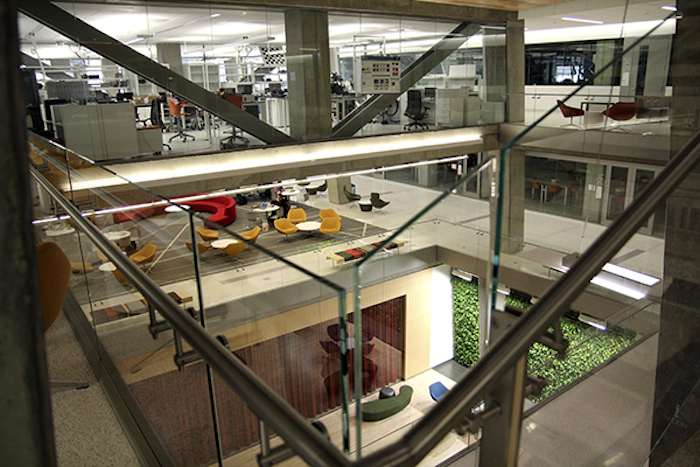.

Michael Keidar, a professor of mechanical and aerospace engineering, developed a thruster system that is being used in two miniature NASA spacecrafts. Keidar runs a micropropulsion and nanotechnology lab at GW.
-
A GW professor’s research is going up, up and away.
Michael Keidar, a professor of mechanical and aerospace engineering, developed a thruster system that is being used in the engine in one of two miniature NASA spacecrafts that will fly in tandem toward the sun. Keidar said that the system has been integrated into the satellite and will launch in the coming months.
NASA engineers partnered with South Korea's Yonsei University and the Korea Aerospace Research Institute to allow the miniature spacecrafts to fly toward the sun and hold them in alignment to create a virtual telescope to later study the sun and planets beyond the solar system.
Keidar said the Korea Aerospace Research Institute asked him to develop a thruster system for their mission about two years ago. NASA and the Air Force have funded his research and he said that he received additional funding from GW.
“If this performs well, it will probably introduce us to a larger group of interested potential users,” Keidar said. “It is absolutely great to be a part of this project and we hope that the whole system will perform well.”
Keidar said that more space exploration is using smaller technology and that he was tasked with building a little engine that would be able to be manipulated inside a small 4-by-4-inch cube satellite in space. He said his key objective in this NASA mission was to develop a plasma engine that could function in the small satellite.
“This is where the industry is going right now,” Keidar said. “You can distribute the large satellite into a bunch of small satellites which would increase the ideology of the entire system and it makes it cost effective.”
Keidar said he works in the plasma technology field, which includes plasma medicine in addition to plasma engines and thrusters. He said he came to GW and started his research in 2007.
After the first prototype of the system was built about five years ago, his team began testing the structure before they were able to start getting flight opportunities, he said.
This isn’t the first time Keidar has helped send satellites to space. His research was used in a Naval Academy launch last year and that satellite is still in space now. He said the system NASA is using is very similar to the one used in last year’s launch and hopes that it will be a success.
“It is already integrated and it is undergoing usual testing before launch, so I think within the next month it will probably be ready in the entire launch system,” Keidar said. “It is basically out of our hands.”
Neerav Shah, one of the NASA engineers in charge of the launch, said in an email that the system Keidar developed has been integrated with one of their satellites. Shah said the mission is designed to test the technologies needed to fly these two satellites in tandem with positional accuracies down to 1 centimeter.
“Although others have flown two or more satellites in space, no one has attempted to align two satellites across a long distance with a distant celestial target, such as a black hole,” Shah said.
Shah said that if the mission is successful, this will enable future large space telescopes that require two or more satellites aligned to a distant celestial source.
“This advancement will increase confidence in funding missions seeking to use this technique to gather science data,” Shah said.
Quelle: The George Washington University
4178 Views
